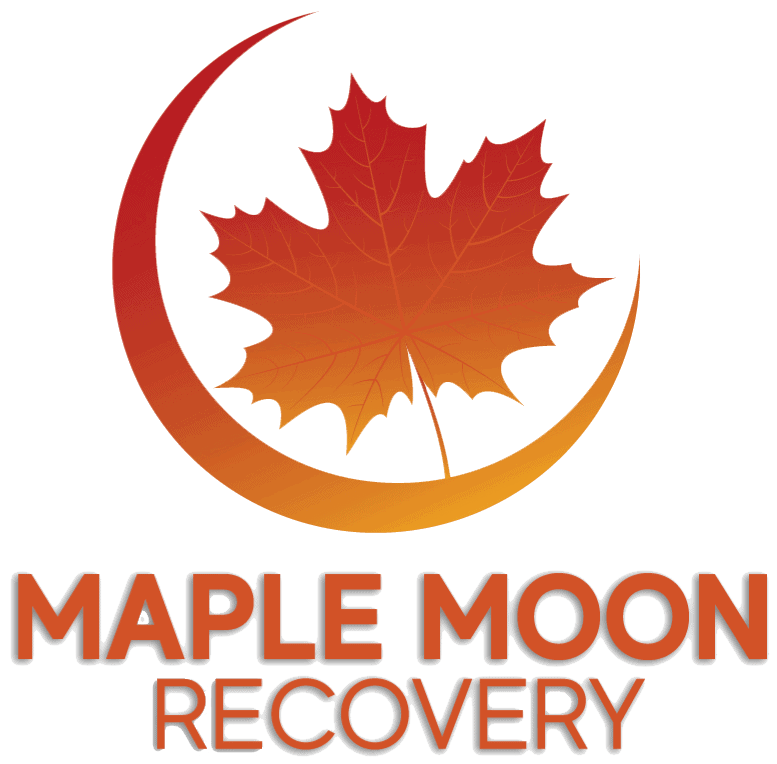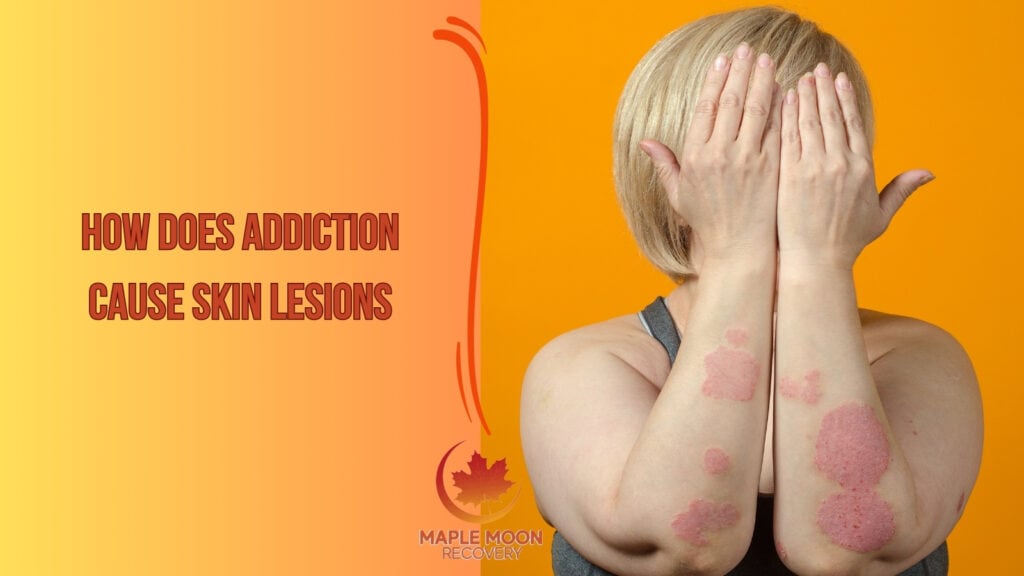The ways addicts manipulate are far beyond what the average person can wrap their head around. Addicts are so good at manipulation and dishonesty that it is difficult for many to comprehend they are not being truthful or sincere in their speech. What makes an addict so convincing is they often believe their own story. With a highly distorted perception of reality, addicts instinctively manipulate because they are convinced with what they are saying and what they believe is true. If you were to put an addict on a polygraph test, they would most likely pass. They are so convinced in the moment that they come off as being sincere, honest, and believable. Addicts are known to be dishonest even when the truth would be a better option.
What are the ways addicts manipulate?
There are several ways and reasons addicts manipulate, which we will list later on. In the meantime, it is helpful to understand the four building blocks of these manipulations. These four are Guilt, Hope, Fear, and Victim, all of which accomplish two goals:
- Keeping themselves comfortable by executing these four building blocks of manipulations, often at the same time, the addict sets forth on a journey to keep the status quo of their addiction and to avoid consequences at the expense of others.
- Inflicting emotional pain onto the people the addict feels is the cause of their pain. Whether it is true or not, addicts do this because they believe this.

When the addict is beating you down while attempting to manipulate you into giving them something they need, the victim strategy is used to blame someone or something else as a reason they need assistance:
“I have tried to get a job, and nobody will hire me. My soon-to-be ex-wife is causing me all these problems,”
or,
“If you were going through what I was going through, you would use drugs too.”
The woe-is-me, victim of circumstances ploy can pull on just about anyone’s heartstrings that love the addict.
While playing the victim, they are most likely using guilt manipulation that if you don’t do what they ask, you are the problem:
“So, you’re not going to help me? Then if I die or go to jail, it is your fault. You don’t love me anymore.”
Guilt is very effective and beats the one being guilted into submission. Over time the family member on the receiving end of the guilt surrenders quickly to avoid the wrath of the addict, whose only goal is to make you feel you’re in the wrong for their situation and that you are somehow responsible for correcting their problem.
Addicts sell hope, often stating that this will be the last time they will ask you for something or if you help them, they will change tomorrow:
“I promise if you just give me money this one last time, I won’t ask you again, or I will look at rehabs tomorrow.”
A temporary shift in behavior also sells hope. Selling hope can be non-verbal. Addicts have an unbelievable sixth sense. This sense is knowing when to walk the line to throw the scent off the dogs. All of a sudden, they look better and sound better. The problem with clinging to hope is that hope is temporary. The addiction problem is rarely solved by snapping out of it and then starting the next right thing. Families see the addict looking for work, going to the gym, attending Church, saying all the right things, getting up early, showing up at family functions, etc., and they believe the past is behind them. If addicts could become sober by doing an about-face resulting in permanent change, we wouldn’t have the kind of addiction problems we have today.
They rattle your cages with fear that if you don’t help them, they will be harmed or die:
“So, you’re just going to let me die or go to jail then? You will never see me again.”
Fear is often used while guilting or shaming someone. Families become paralyzed in fear that if not for their love, support, and enabling their loved one would be far worse off than they already are. When people are kept in a state of fear, they consume. The family consumes the constant onslaught of manipulation, fearing that if they don’t help the addict, they will be put in harm’s way. Most family members, especially parents, are willing to compromise what they know deep down is not helpful because of the fear the addict has held over them.
One of the greatest fears in life is the fear of the unknown. For many, staying the same, even when uncomfortable, is a less fearful option than the unknown that follows from significant change. Families enable out of fear, yet the fear of what will happen if they stop enabling consumes the family into continuing the status quo. The abnormal becomes the new normal, and the only one accomplishing anything is the addict on their quest to self-medicate at the expense of others.
Addicts manipulate using these four building blocks with circular logic to spin you into a state of flooded dizziness. Beaten down by mind-warping manipulation, families give in, and giving in only teaches the addict they can come back for more.
Why are addicts manipulative?
Addicts manipulate to get what they want, punish others, stay comfortable, and maintain the status quo. It is not uncommon for families to describe manipulative and mental disorder behaviors present even before the substance use was introduced. Many substance use disorders clients have many of the same symptoms as Antisocial Personality Disorder and Reactive Attachment Disorder. It is not always the case, but it is more common than you might think. It is not to say they have either of these disorders even when showing symptoms. Substance use disorder clients may manipulate others because they do not feel good about themselves. At times, they push people away because they are fearful of rejection. That sounds strange to push someone away if you fear rejection. The reason for this strategy is that if you push them away first, you do not allow the other to get close. By not letting them get close, you are preventing rejection from ever occurring.

The point being made here is that many substance users manipulate to avoid all discomfort. It isn’t necessarily coming from a place of being a bad person or just a lying addict. It is often coming from an instinctive coping mechanism used to avoid losing their only solution of drugs and alcohol that helps them avoid the uncomfortable feelings, experiences, and trauma which they are avoiding. We’re not giving manipulation and substance use a free pass. Both manipulation and substance use are ineffective solutions and are not sustainable. For the addict, this is all they know, and when a family allows it, the substance user feels entitled and becomes angered (which is rooted in fear) when confronted or questioned about it. Their maladaptive coping mechanisms, along with substance use, become part of them.
The thing to remember about manipulation and lying is that it requires two people to take part in it. The first person is the dishonest and manipulative one; the other is listening to it, allowing it, and reacting to it.
Selfishness
Selfishness is an overwhelming similarity among substance users. We don’t believe it is possible to not be one without the other. Not all selfish people are substance users, and just about every substance user is selfish. Some people are selfish and don’t even know they are. Many people do nice things for others, and the same people are referred to as good people who would give you the shirt off their backs. Are they doing these things for the greater good, or are they doing it for themselves? A great test is to observe what happens and how you feel after the good deed is done. An unselfish person will be ok regardless of the response from the one receiving the good deed. A selfish person will be angered if they are not validated or acknowledged. Making an anonymous donation and making a donation where everyone knows it came from you are two entirely different things.
Guilt
When people are selfish, they make it all about themselves. They act as if they care, and maybe they do, and they care about validation and recognition for themselves first. For a substance user, selfishness is what leads to resentment. Addicts manipulate others and do things only thinking of themselves. When things don’t go exactly the way they expected it to or wanted it to, they retaliate. The retaliation may be direct, and it may be behind your back with verbal assaults to anyone who will listen to them. The point being made is that selfish people are only in it for themselves and lead with what they can get from others rather than what they can give to others.
Guilt is the feeling you have when you acknowledge or realize you have done something wrong. When substance users act out using guilt as a manipulation, they are essentially diverting attention away from themselves and selfishly making it about the others they believe are to blame. When you don’t give the substance user what they want, they make you feel guilty for their problem and try to manipulate you into solving it for them at the same time.
Have you ever wondered why shame was not an option when asked how someone in court would like to plead? The only options are innocent or guilty. Why not shame as a third option? Shame is when we believe or are led to believe we are a terrible person with or without the act of doing something wrong. Substance users like to use the one-two punch of guilt and shame. They often start by selfishly seeking something from you, and when you don’t give in, they make you feel guilty like you’re doing something wrong and then shame you into believing that you’re a bad person if you don’t give in.
Shame
When an addict shames a family member, they are often trying to inflict pain onto the person they feel is the cause of their pain. Addicts are themselves hurting, and hurting people hurt other people. It is not uncommon for the addict to have a go-to person to manipulate with shame. Guilting someone is a little less personal than shaming them. When the addict pulls out the shame, they are often sending a message that the person they are shaming is directly or indirectly responsible for their feelings. Guilting your brother and telling him he’s wrong for not providing money is less personal than shaming mom for not giving money. Shaming often comes from deep-seated resentment and is a message of internal conflict among the substance user and the family member being shamed. Family secrets often stem from shaming manipulation.

Control
Many addicts attempt to control everything they can. They often do this with smoke and mirror illusions led by manipulations. Early we spoke on guilt, hope, fear, and victim, the four building blocks of manipulations. The addict feels that if they can control people, places, and things, they believe they can control the outcome. By manipulating others with these strategies, they are often successful in making others do what they need to use drugs and alcohol successfully. The question is not so much why they use control to get what they want; the question should be, why do others allow it?
The addict is not the only one using control to manipulate family members. Family members also manipulate themselves by believing that giving in to any of the manipulations will result in them controlling the outcome of the substance user. Often they think that if they make their loved ones comfortable, they are ultimately helping them. The control manipulation is not all on the addict. Families can be equally responsible when allowing themselves to believe they are helping the addict by controlling the level of comfort they provide. In our experience, the addict will go on until they can’t. In almost every case, it requires the family to stop giving in and enabling the addict to control them with manipulations. Once boundaries are set and the addict is held accountable, they can begin realizing their manipulations are no longer effective. This, in turn, allows the addict to start looking at things differently. This change in perception occurs during the contemplation stage, which is the second stage of change. What often follows is the addict moving into the 3rd, 4th, and 5th stages of change which are preparation, action, and maintenance. Until both sides have accepted that neither side is effectively helping the other, it is most likely that things will become progressively worse.
One of the most famous stories in the textbook of Alcoholics Anonymous is on page 449 of the 3rd edition. It is basically about the need to control everyone and everything. The solution to this need for control is acceptance.
How an addict manipulates
In addition to some of the manipulations already mentioned, some other manipulative techniques are worth discussing. The more knowledge a family has, the better prepared they may be to detect the manipulation and effectively respond to it. As you may have already realized, manipulations run much deeper than something someone says or does to get money or resources from you. The addict is telling a story of their pain with every manipulation tactic. Manipulations are cries for help, and when they use manipulations, they are saying something much more. We all want to call addicts liars and manipulators, and rightfully so. The real question is why and how they do it.
Isolating
It is not uncommon for any member of the family to cycle through various family roles. Even the substance user is no different, being the member of the family who is in the role of the substance user. In this role, they can also play the part of the lost child. It may be difficult for some to believe that the substance user will go silent and try to become unnoticed when everything they do appears to be on center stage. The addict will, from time to time, try to fade away into the backdrop for many different reasons. One of the reasons is to throw change into the mix. By withdrawing and isolating, they are keeping their behaviors and substance use out of the spotlight. This strategy turns the family from certainty to mystery. When the addict is center stage, the problem is present. When they hide and isolate, they take away the family’s ability to see the problem, leaving the family questioning things. It changes the routine, and that is the intention of the substance user.
Another reason the addict isolates is to get noticed.
It goes back to the fear of rejection and to see how far someone will go to chase them.
Addicts and lost child family members isolate themselves to keep people away to avoid rejection. They also do this to see if they are worthy of love by whether or not the family comes running to them or provides extra attention. As stated above, isolation leads to mystery behavior. The addict isolates in an attempt to gain sympathy and empathy from the family members then play the victim when found. This often works because the family becomes riddled with guilt and shame and often believes they drove the substance user into isolation. The addict feels this way, so they are not wrong; they are not necessarily healthily attracting attention. They use isolation as a manipulation to reel the family in to strengthen their victim stance and flip the script on the family for pushing them into hiding.

Silent treatment
The silent treatment is very similar to isolation. Think about anytime you went silent on someone; what were your intentions and motives? The addict uses the silent treatment to get others talking and to punish them. Most people are uncomfortable in silence, and the substance user knows it. The silent treatment becomes a battle of will as to who will break first. If the family breaks the silence first, they often do so out of concern, worry, guilt, or shame, and the addict has them right where they want them.
If the addict breaks the silence first, they usually flip the script, stating:
“So what? You’re not talking to me now?”
The silent treatment is also used as a passive-aggressive manipulation. By going silent, the substance user sends the message to stay out of their business and not ask questions. The longer it goes, the more eggshells the family walks on and the harder it becomes to break the silence. During this time, the addict comes and goes with impunity.
Guilt-Tripping
We have covered guilt extensively as one of the building blocks of manipulations and as a precursor to shame, blame-shifting and victimization, just to name a few. Trying to convince someone they are wrong when not giving in to a substance user’s demands often becomes the norm. Some examples of guilt would be the addict saying that you don’t love them anymore or that when something goes wrong, it is your fault.
The most common one we see during intervention is when the addict says:
“Had you not done this intervention and went about it differently, I would have gone to treatment… Now, because you went about it this way, I am not going anywhere.”
Most follow it up with playing the victim at the intervention and then use guilt and shame on the family. This is an attempt to make them believe they went about this the wrong way and that they are horrible people for attempting to get them the help they need.
Blame shifting
Blame shifting is a diversion tactic used to flip the script and, in many cases, places the addict in the role of victim. Addicts are notorious for blaming people, places, and things for their problems. Substance use results in a lack of ownership and accountability. A very effective recovery tool is a personal inventory: The substance user looks at what they did to create the problem and not the other person’s actions. Most substance users find that in every case, they somehow and in some way were the origin of the problem they are trying to blame someone else for.
We like to call this turning off the blame thrower.
An example would be blaming the police officer for arresting you after you robbed the bank. While in custody, you blame your family for not giving you money that resulted in you robbing the bank. As the addict goes on and on about how they were wronged by law enforcement and their family, they make no reference to the fact that they indeed robbed the bank.
It is essential to recognize that Victim & Blame-Shifting occurs when an addict is headed for relapse or is unwilling to enter a treatment program. Comments to listen for is a reference to negative talk towards others. One of the first warning signs of blame-shifting from a person in recovery is speaking ill-will of their 12-step meetings and sponsor. Gossiping is a form of blame-shifting, finding fault in other people, places, and things. Relapses happen long before the person consumes drugs and alcohol. Blame-shifting and a negative attitude is often an early-stage warning sign. The same applies to those refusing to get help who are actively using drugs or alcohol. They make comments such as treatment doesn’t work, they are just in it for the money, and the 12 steps don’t work either. They say this as if their way of going about the problem is better.

Dependency
Dependency on others to support an addiction financially, emotionally, mentally, physically, and spiritually are commonplace. Most addicts in and of themselves are not in a position to be successful at using drugs or alcohol; they almost always need your help in some way. On a different note, the family becomes dependent on the addict too. How is this possible? Over time, addiction and the routine become the norm. The more the addict manipulates, and the more the family allows it, the harder it is to break the cycle. As unhealthy family roles form and codependency sets in, families start to gain something from the substance user being addicted. That sounds crazy to most, yet it is true.
For those reading this that struggle believing it, ask yourself:
Why are you not doing something about it or doing something different?
What are you waiting for?
The primary enabler becomes dependent on being needed by the addict, and the addiction becomes their purpose. For the martyr they become a victim and receive attention, empathy, and sympathy from others. Their dependency on this paralyzes them by a fear of change – what will happen if their loved one gets better?
For the hero, they are dependent on the others’ addiction because while their loved one is unwell and failing, they are able to exercise their overwhelming need to be the shining star perfectionist of the family. We’re not suggesting anyone likes this or wanted it to be this way. The reality is, this is how it is now, and this is how family dysfunction operates. The family becomes just as dependent on the addict’s addiction as the addict is on the family’s enabling and codependency.
Lashing out
Before addressing lashing out manipulation, it is important to remember that anger can always be traced back to fear. Sometimes it is difficult to comprehend this, especially when the fear triggers anger due to a bruised ego. For substance users, lashing out is often used to teach others not to question them. If a family member learns that anything they do will be met with harsh resistance, they are most likely not to say anything and comply to avoid any confrontation.
In summary, we have a two-fold situation that occurs when the addict lashes out:
- First, they are showing their hand that they are scared with the anger and outburst.
- Second, the family reacts in fear and surrenders to the manipulation or seeks to avoid any confrontation altogether.
Many families are afraid to do an intervention for fear of the addict lashing out at them or us. For starters, most don’t do that at the intervention. Many do the opposite of what families tell us they will do. This is a manipulation by the addict in an attempt to throw us off. They expect us to be told they are going to act a certain way, and when we arrive, they put on a different persona.
How to tell when an addict is lying and how to cope
Sadly, an addict often lies while actively using substances and is headed for relapse when in the middle of a behavioral downturn. Addicts are also known to be dishonest in detox and the early stages of treatment. The biggest mistake a family makes is believing the dishonesty comes from the substance use itself. An addict can be more dishonest when free of drugs and alcohol while in treatment for months, weeks, and days leading up to using drugs or alcohol again.
Most have heard of the term “dry drunk.” In speaking with many families, it is not uncommon to be told their loved one was at their worst in the days leading up to them relapsing and not necessarily when they were actively using drugs or alcohol. This is why when we hear from a family that their loved one just quit, we know the chances are high that the person who was once using drugs or alcohol is miserable if not engaged in recovery efforts after quitting.
Families have instincts and intuition; if it doesn’t sound right then, it probably isn’t. If you have to ask yourself if they’re lying, then they probably are. A good rule of thumb is when they are active in their addiction, jail, headed for a relapse, in detox, or treatment, it is safe to say they are either lying or omitting something. We don’t want to categorize all addicts as being incapable of telling the truth, although it is common for them to be dishonest.
The question is not so much are they lying, but why are they?
Addicts don’t think they are lying when they believe their distorted perception of reality. It is safe to say that some know they’re lying, and some don’t know how to tell the truth anymore. It has been said that an addict will lie even when the truth would be a better option.
To cope with an addict lying, the best thing a family can do is enter recovery themselves. The more family members take care of themselves and not the addict, the better it will be to navigate truths and lies. The goal for any family member is not to get caught up in trying to figure this out. Trying to figure out truth and lies is exhausting, and you’re just riding the insanity train with them. Not to mention, this is codependent behavior.
A good rule of thumb is to look at the reaction and not the actual response when you ask them a direct question or ask a question in response to what they say or do. An example is when you ask the substance user to take a drug or alcohol test. The reaction is all you need, and anything they say is irrelevant to the reaction. Remember, anger is fear, and an explosive response will tell all. If they have to explain themselves or say anything other than OK, they will probably lie and will most likely have a positive test result.
When a family is in their recovery, they may not always know when the addict is lying, and they will always know when they are not.
What help is there for addicts and their family members?
Addiction is about self-medicating behaviors, experiences, mental health, and traumas. Alcohol and drug use is the maladaptive coping mechanism to these problems. For families, enabling, codependency, unhealthy family roles, and being unaware of manipulations is the drug of choice and the ineffective maladaptive coping mechanisms. There is help for both the addict and the family. Research shows us that when the addict and the family both enter recovery, their outcomes are greater than when only one does. Families and addicts can both learn that neither side has any real control over the other. Families can’t control the outcome of a substance user, yet they often think they can. Addicts can’t control the family, yet most can do just that because the family allows it.
At Family First Intervention, we would like to hear from you and do our best to help you construct effective solutions for both your family and the addict. Neither the family nor the addict can develop a more effective solution than a third-party professional who is not emotionally connected, has the experience, education, and can see the problem from the balcony. Families and addicts often try to formulate solutions on the stage where they can’t see the bigger picture. Allowing professional interventionists to navigate is best for all involved. What families expect of their loved one who is an addict should be a similar path they expect for themselves. Thinking the addict is the only one that needs help has caused many to relapse through the cycle of addiction. Whether the addict becomes clean and sober or not is outside of the family’s control. What the family can control is whether or not they enter their own recovery program and educate themselves. There are many ways for families to build a support network for themselves, and Maple Moon Recovery can help you with that. Contact us today!




